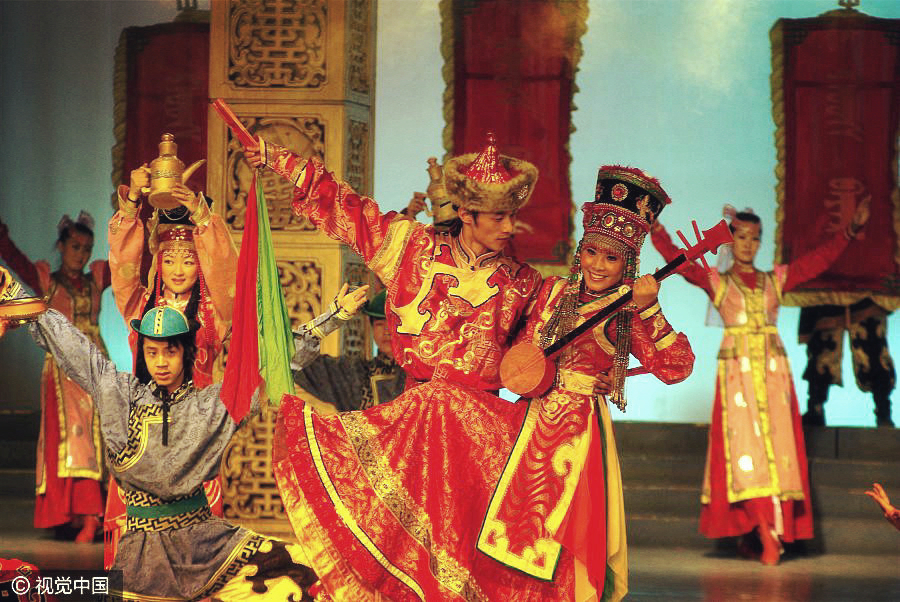
North China's Inner Mongolia autonomous region is well-known not only for its natural beauty, but also for its intangible cultural heritage. Here are six heritages from Inner Mongolia that are precious in terms of cultural value and historic influence.
Erdos wedding ceremony
The wedding ceremony from the Erdos region is thought to date back to the 15th century. Nowadays, the ceremony has evolved into a unique custom that is rich in Inner Mongolia's cultural heritage.
The wedding involves a series of special ceremonial rituals, such as presenting a traditional scarf, known as the Hada, for engagement, greeting the son-in-law, offering sheep and asking for the mother's blessing. The procedures have been well preserved throughout centuries.
The wedding embodies the Mongolian ceremonious characters and various other ethnic traditions.
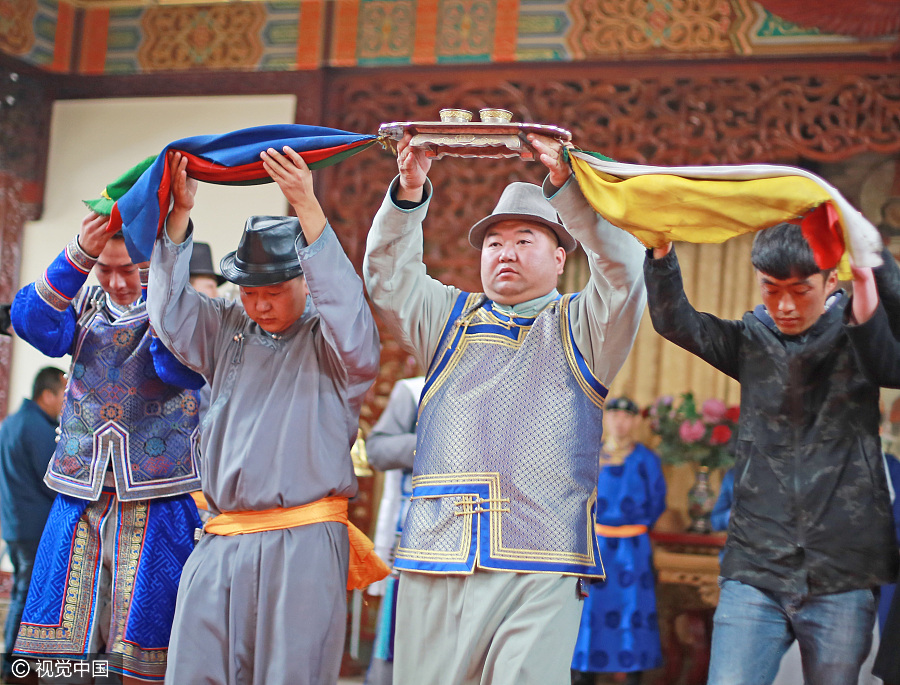
Sacrificial ceremony to Genghis Khan
Located in Erdos in Inner Mongolia, the Genghis Khan mausoleum is a sacred place to pay tribute to Genghis Khan.
After his death in 1227, Genghis Khan was buried secretly according to the local custom. To commemorate the great leader, Mongolian people built the "Eight White House" consisting of eight mobile white yurts in the north desert.
A ceremony is held once a year to worship the Mongolian people's ancestor and hero Genghis Khan. It has various forms, including offering animals and lighting fires. There are some precious sacrificial utensils used, a testimony of Mongolian people's love of nature and animals.
The ceremony reflects Mongolian national sentiment, and testifies to the eternity of their culture.
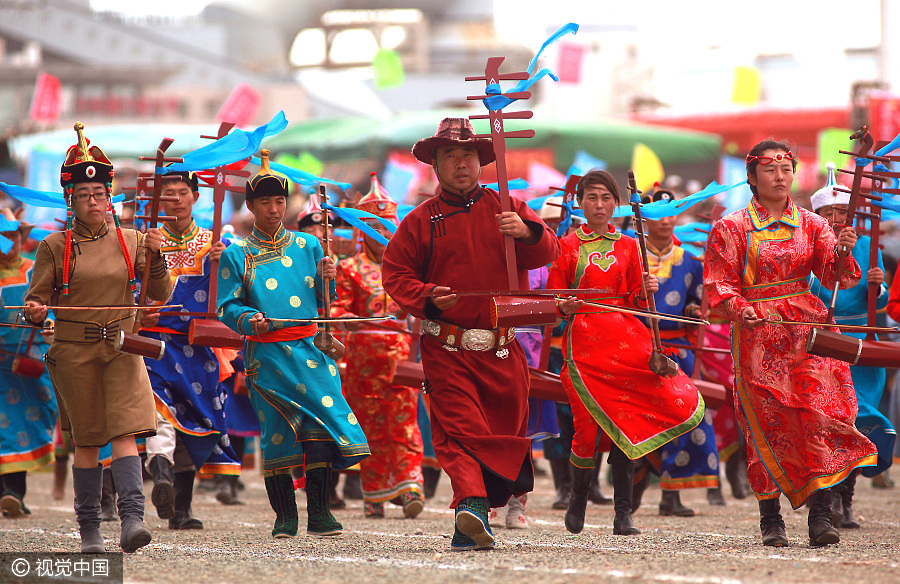
Nadam fair
Nadam fair, a huge traditional Mongolian festival, originated in the early days of the 13th century. Nadam means "entertainment' or "recreation" in the Mongolian language.
A "Huli Letai" (big meeting) was held by Mongol leaders every month to make laws and regulations and appoint and remove officials. They also took part in a large Nadam Fair. In 1206, a grand Nadam Fair was held when Genghis Khan was elected as the Mongolian Khan.
Since the first fair, the "three skills" of wrestling, horse-racing and archery, have been a central part of the Nadam activities. In the past, winners of the three sports would be given horses, camels, sheep, brick tea and silk as prizes.
Nowadays, more activities have been added, such as polo, horsemanship, track and field, and other ball competitions.
It is always held in summer or autumn (usually July or August) when the grasslands are beautiful and flocks and herds are ready for tallow. It can run for up to a week.
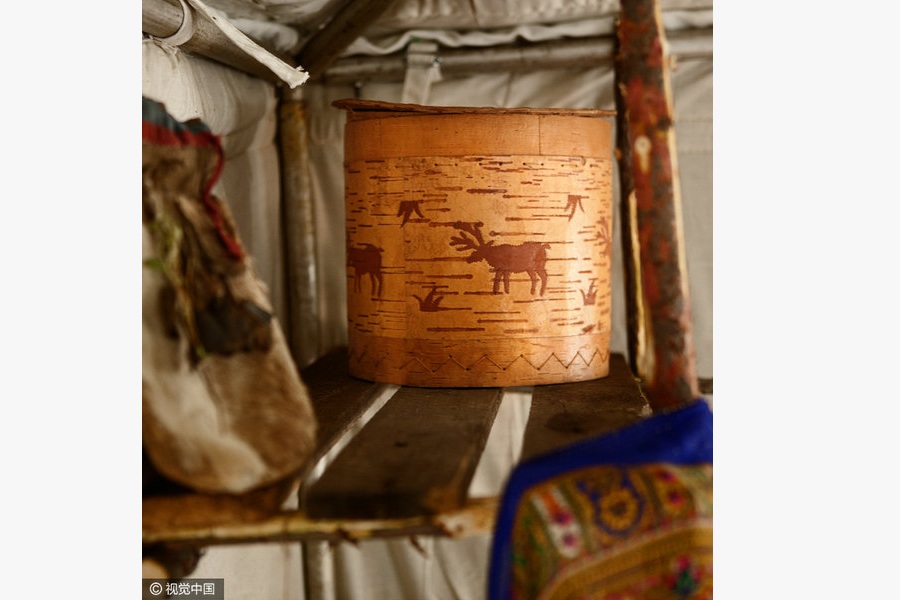
Birch bark utensil
The tradition of making utensils out of birch barks still exists in Inner Mongolia and some parts of neighboring Heilongjiang province. Due to a shortage of pottery or ceramics in the past, some nomadic ethnic groups living in North China, such as Mengol, Oroqen, Daur, and Ewenki, used birch bark to make daily utensils.
Nomadic ethnic groups preferred to use birch bark utensils largely because they are portable, durable, waterproof, and resistant to corrosion.
There are four steps to making birch bark utensils: peeling the birch bark, soaking or boiling it in water until it softens, cutting and sewing and finally, decorating it with beautiful patterns.
As the living style of nomadic groups changed, birch bark utensils became less common. On the brink of disappearing all together, the traditional craft needs protection.
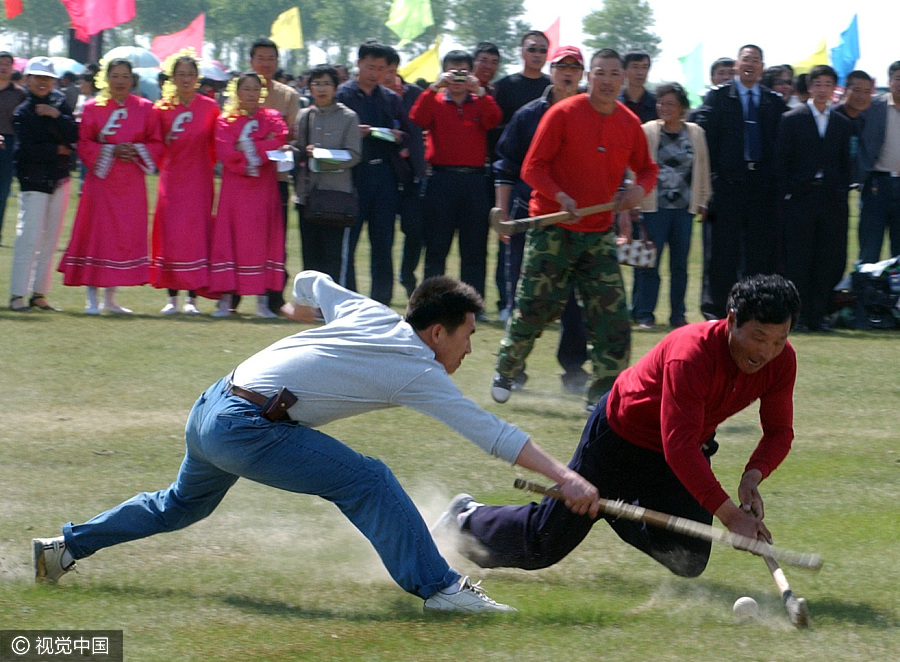
Daur field hockey
Field hockey, called "Beikuo" in the Daur language, is a traditional sport with a long history. According to records, a sport called "hitting a ball while walking", which is similar to the present field hockey, was very popular in the Tang Dynasty (618-907). While it gradually disappeared in other parts of China, it has been passed down from one generation to another in the Daur regions.
The stick the Daur people used to play the game was about one meter long, mostly made of oak, and hooked at the bottom. The ball is made of apricot root or felt and is as big as a tennis ball.
On each festival or happy occasion, the Daur people will hold a "Beikuo" game. At night, they will play the game with a fireball made up of birch tree knots.
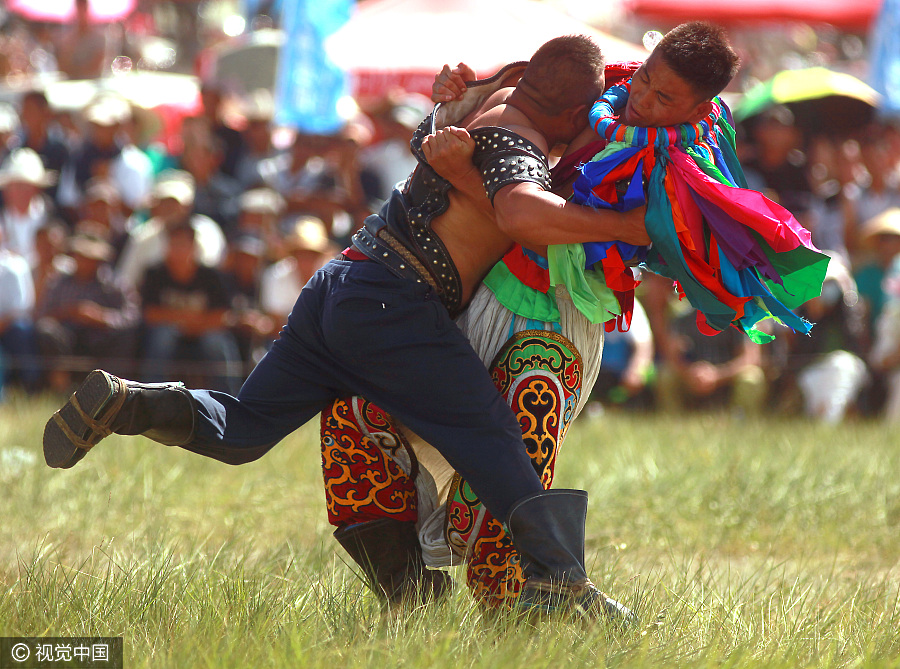
Mongolian wrestling
Boke, the Mongolian word for wrestling, has a history of more than 2,000 years. It is a rugged hand-to-hand sport, relying more on raw physical power than a wide variety of techniques. It is loved by Mongolian athletes, scholars and statesmen for its unique combination of athleticism and aesthetics.
The Mongolian way of wrestling has different rules, methods, uniforms and fields from the Chinese form and sumo in Japan. Wrestlers are matched by arrangement or by drawing straws. The judges enjoy high prestige and command universal respect. Half of the contestants are eliminated each round in the sudden death competition.
As soon as the judge gives an order to start, the opponents shake hands to show respect to each other, and then begin wrestling. There is no time limit, and the opponents can use any method or moves they want, such as pulling, kicking, tripping, pushing, holding or lifting. However, holding your opponent's legs, arbitrarily kicking, or pulling down his trousers is not allowed. Whoever touches the ground with any part of his body above the knees loses.
Awards are given to both contestants. The loser receives his award first, the winner second. No one goes home empty-handed. A Mongol isn't considered a real man unless he wrestles.